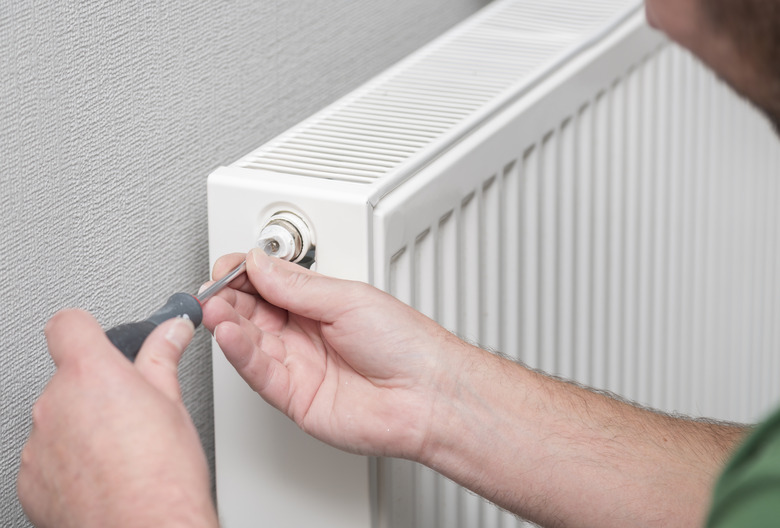How To Bleed A Radiator Without A Key
A house with radiators has a boiler, usually in the basement, to supply them with hot water. To get efficient heating, the hot water must circulate completely through each radiator, but it can't do that if air gets into the system. The air tends to collect at the top of the radiator, and it creates a barrier. That's why each radiator has a bleed plug, which is usually located on the side near or at the top. The bleed plug often has a special shape, and you need a radiator key to turn it. Don't worry if you lost your key. A number of tools can stand in and do the job.
The Basics of Bleeding Radiators
The Basics of Bleeding Radiators
You can tell when one of your radiators needs bleeding by performing a simple test. Turn on the heat and wait for everything to warm up, and then feel the base of the radiator. Because it's close to the water inlet, it will feel hot. Now run your hand along the radiator to the top. If it feels progressively cooler as you do this, there's air in the pipes that is preventing the hot water from circulating. Opening the bleed plug releases this air. It's a simple enough concept, but many people forget to do it. The result is a high heating bill and a colder house.
What to Do if You Lost Your Radiator Key
What to Do if You Lost Your Radiator Key
Bleed plugs can assume a variety of shapes. Some are shaped like square nuts, and the key is simply a socket that fits over the nut connected to a handle. If you lose this type of key, reach for your socket wrench set and choose the socket that fits over the plug. You can also use a spanner or a pair of pliers to turn this type of plug.
Some plugs look like security screw heads, with a hexagonal orifice inside of which is a square or hexagonal nut. The nut prevents you from substituting a hex wrench or screwdriver for the missing key, but you can usually fit the jaws of a pair of needle-nose pliers into the orifice to grab the nut and turn the plug.
You may also come across bleed plugs with a hexagonal socket. The radiator key for this type of plug is basically an Allen key. If you lose your key, you can simply use an Allen key of the same size. No Allen keys in the house? A flat-head screwdriver often makes a suitable Allen key substitute. If it's slightly smaller than the socket, wrap duct tape around the head to make it fit.
How to Bleed Your Radiator
How to Bleed Your Radiator
Before you bleed your radiator, you should turn off the heat and let things cool down slightly but not completely. You need to have a certain amount of pressure in the system, but you don't want the water to be circulating. Under no circumstances should you proceed if steam is coming from the radiator vent valve. That means there is excessive pressure inside, and steam and water will spew from the bleed plug if you open it.
When you're ready to bleed the radiator, put a large rag under the bleed plug to protect the floor and hold a small container under the bleed plug. Open the plug by turning it counterclockwise and let the steam escape. Close the plug as soon as the steam turns into a stream of water. You've now purged the radiator, and it's time to move on to the next one. After bleeding all the radiators, check the pressure gauge on the boiler. If it's too low according to the manufacturer's specifications, then add more water to the system following the manufacturer's instructions.
